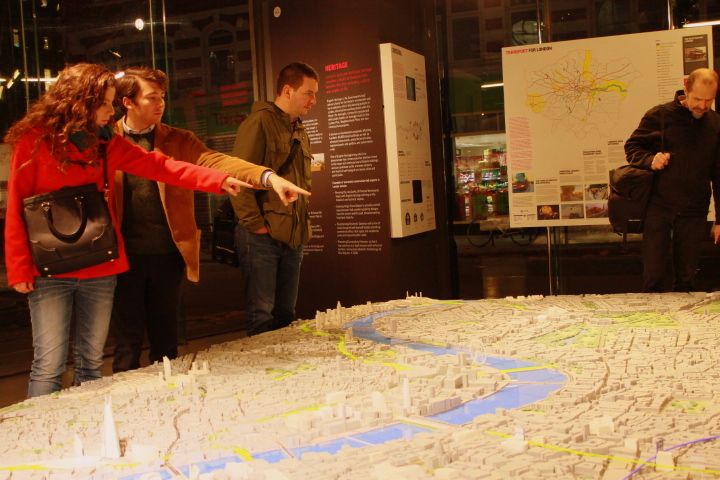Decoding London
How does one of the most sought after cities like London cater to the growing needs of its population? The answer lies not in the dusty room where bespectacled men toil away amongst columns of registers, but a modern correspondent to that. Digital data.
Hours of number crunching and digital resources go into planning housing, public spaces and you getting a train after missing the previous one by just a minute.
Since the advent of the internet, every person’s activity provides for useful data that is collected, recorded, monitored and controlled.
And voila! You have a smart city which uses digital technologies to reduce energy consumption and costs while contributing to the well-being of its citizens. The main domains it dabbles in are transport, energy, health care, water and waste.
Throwing light on the phenomenon is an exhibition called “Smarter London: How Digital Technologies are shaping the city” which is on at the Building Centre till 18 December.
It comes after a six month NLA (New London Architecture) Insight study with Bartlett Centre for Advanced Spatial Analysis (CASA), University College London.
It summarizes the work of various organizations providing IT and infrastructural services to the city of London. Extremely beneficial to city architects and developers, this exhibition is equally interesting for the general public. “It’s fascinating! You think of London having a lot of high buildings, but in fact it is quite localised,” expressed a visitor, Chris Roberts.
City
London City Dashboard collects data from live feeds around the capital and displays it in real time.
The Urban Observatory, an open access online tool, allows users to witness the international performance of cities.
Air quality across key London sites is being monitored by Future Cities Catapult.
3D models are increasingly helping to visualise the impact of future proposed buildings. This has successfully been realised in Seattle through the Parsons Brinckerhoff’s Autodesk model. Buildings are currently responsible for 80% of carbon emissions in London. The aim is to reduce it to 60% by 2025.
People
At the heart of all data are people. But subject participation becomes all the more important here since we have become the fastest source of information,thanks to the internet. Smartphones and sensors trace the behaviour of individuals based on localised data. Data on our social media outlets like Twitter and Instagram can be mapped to understand local activity better.
Urban spaces can evoke stress or positive feelings. CASA are using mobile electroencephalography devices to detect emotions in relation to people’s surroundings.
An exhibit showcases Pigeon Sim that allows visitors to interact with London data in a lively manner. They can swoop over the city exploring any corner they like, just like a bird!
Commonplace and Stickyworld are testament to how citizen feedback is helping to make city planning more transparent. Users can leave their comments regarding a particular neighbourhood which is used by project builders and stakeholders to plan better for citizens.
Transport
10 million people use London’s transport system everyday. The use of Oyster cards directly inform decision-makers about the busiest hours of the day, thus enabling them to improve the transport system. Similarly, bikes concentrate in the heart of the city in the morning, which gives crucial data on bike patterns in the city.
The exhibition also talks about the latest high frequency railway line, Crossrail, serving London and the South-East.
This exhibition signals how human-internet interaction is proving to be a turning point for the optimum use of resources. It’s worth a visit, especially if you are an engineer or an architect.














